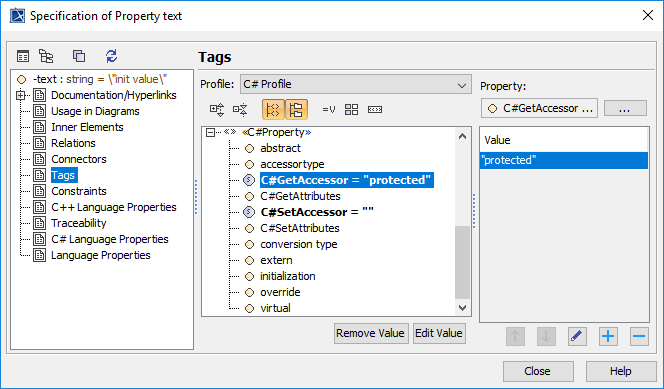The use of accessor-modifiers is governed by the following restrictions:
- An accessor-modifier may not be used in an interface or in an explicit interface member implementation.
- For a property or indexer that has no override modifier, an accessor-modifier is permitted only if the property or indexer has both a get and set accessor, and then is permitted only on one of those accessors.
- For a property or indexer that includes an override modifier, an accessor must match the accessor-modifier, if any, of the accessor being overridden.
- The accessor-modifier must declare an accessibility that is strictly more restrictive than the declared accessibility of the property or indexer itself. To be precise:
- If the property or indexer has a declared accessibility of public, any accessor-modifier may be used.
- If the property or indexer has a declared accessibility of protected internal, the accessor-modifier may be either internal, protected, or private.
- If the property or indexer has a declared accessibility of internal or protected, the accessor-modifier must be private.
- If the property or indexer has a declared accessibility of private, no accessor-modifier may be used.
Example
Class A
{
private string text = “init value”;
public String Text
{
protected get{ return text;}
set{ text = value;}
}
}
Reversed UML model:
Example of Tags required when an accessor-modifier is permitted only if the property or indexer has both a get and set accessor, and then is permitted only on one of those accessors:

